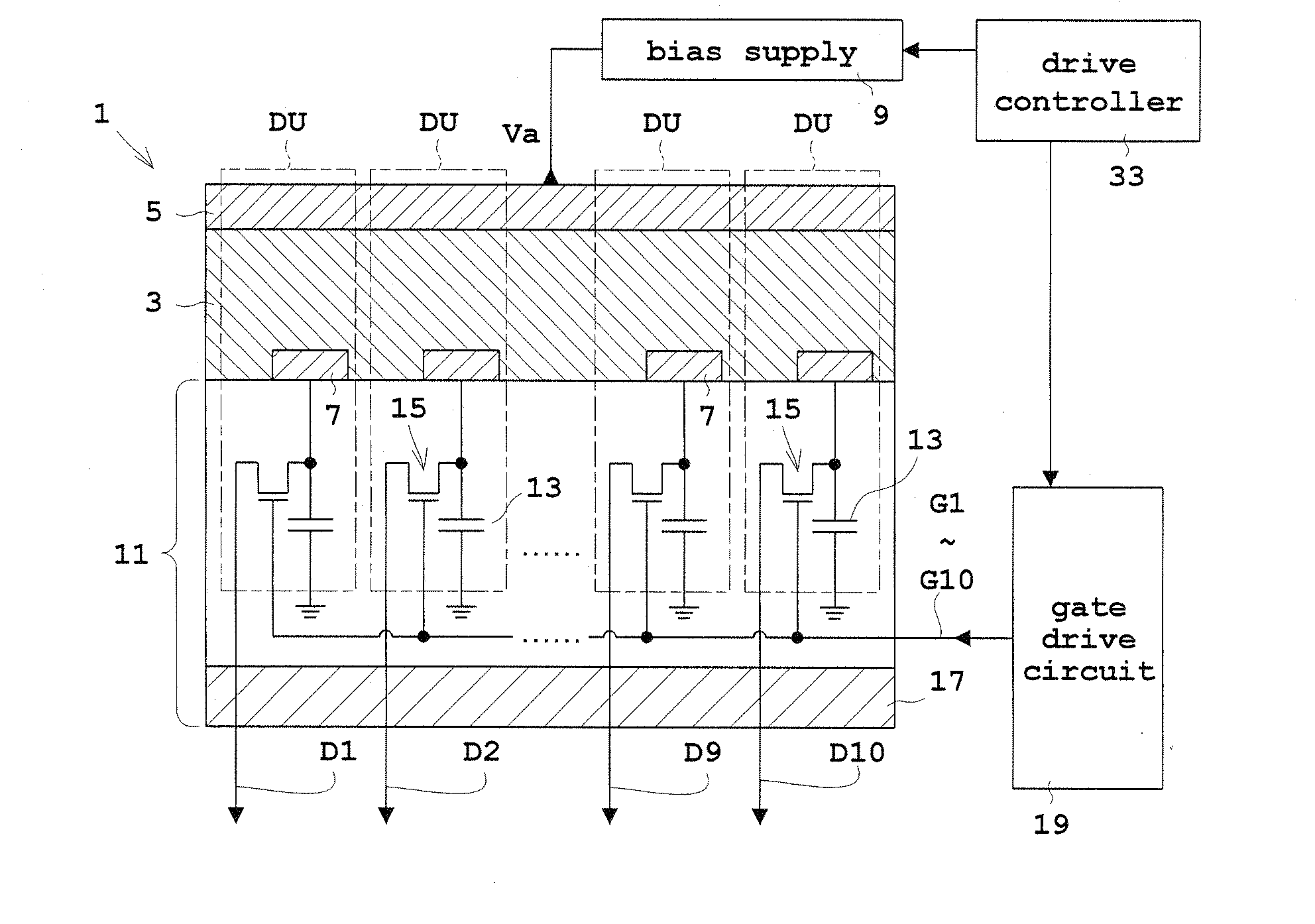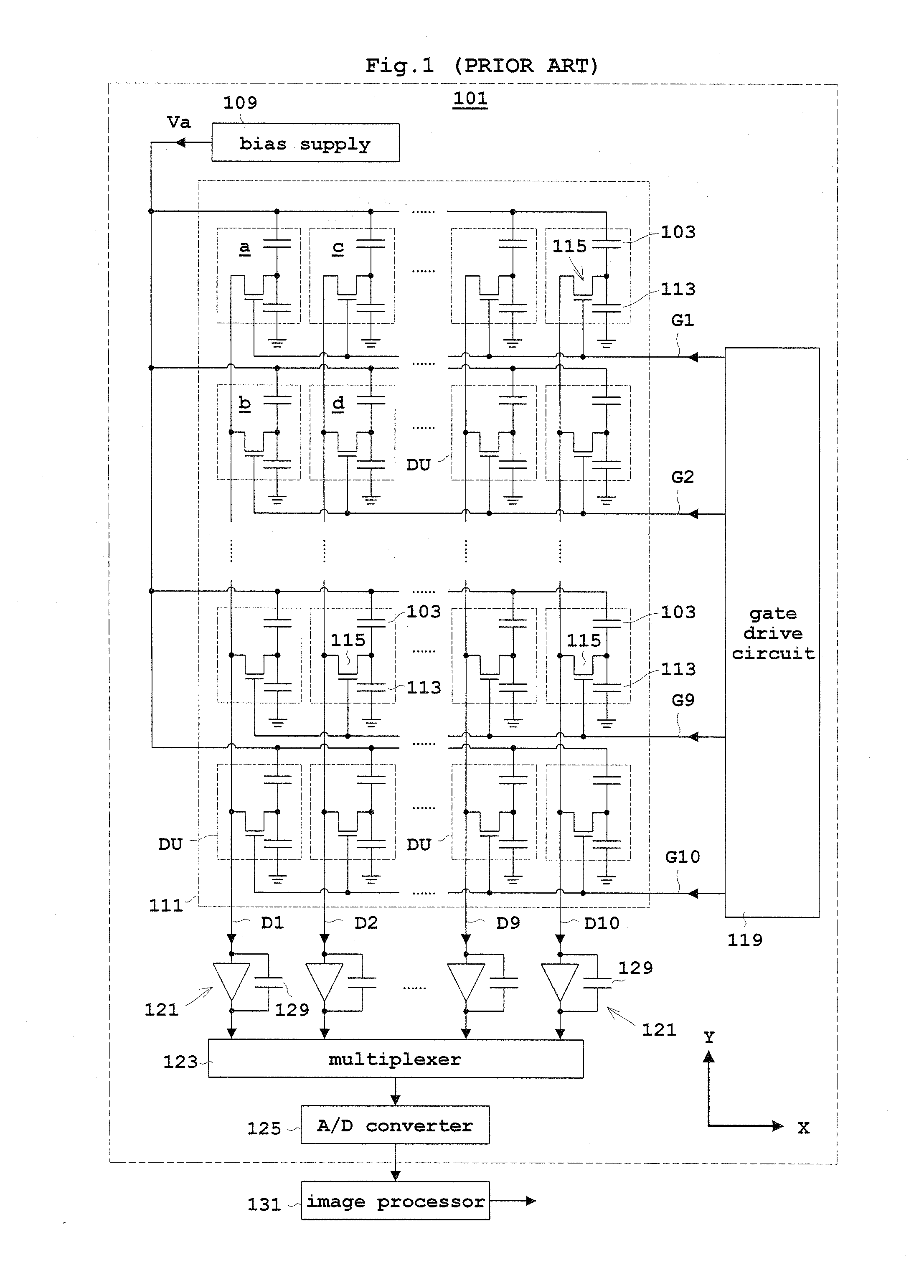Radiation detector and radiographic apparatus
a radiographic apparatus and detector technology, applied in the field of radiographic detectors and radiographic apparatuses, can solve the problems of serious influence of suppress the lowering of the dynamic range dr, so as to reduce the dynamic range, suppress the lowering of the dynamic range, and achieve spatial resolution high
- Summary
- Abstract
- Description
- Claims
- Application Information
AI Technical Summary
Benefits of technology
Problems solved by technology
Method used
Image
Examples
embodiment 1
[0031]In the following embodiments, a flat panel X-ray detector will be described as an example of the radiation detector. FIG. 2 is a view in vertical section showing an outline construction of a flat panel X-ray detector according to Embodiment 1. FIG. 3 is a plan view thereof.
[0032]Reference is made to FIGS. 2 and 3. A flat panel X-ray detector (FPD) 1 includes a conversion layer 3 for converting incident X-rays directly into electric charges, a common electrode 5 disposed on one surface of the conversion layer 3 for application of a bias voltage Va, and pixel electrodes 7 arranged opposite the common electrode 5 across the conversion layer 3 for collecting the electric charges converted by the conversion layer 3.
[0033]The conversion layer 3 is formed of a-Se (amorphous selenium), CdTe (cadmium telluride) or CdZnTe (cadmium telluride zinc), for example. When the conversion layer 3 is formed of a-Se, a bias voltage Va of about 10 kV is applied. When the conversion layer 3 is forme...
embodiment 2
[0058]Next, Embodiment 2 of this invention will be described with reference to the drawings. FIG. 6 is a view showing an outline construction of an X-ray apparatus according to Embodiment 2. Components identical to those of the foregoing embodiment will not be described.
[0059]Reference is made to FIG. 6. An X-ray apparatus 41 according to Embodiment 2 includes the FPD 1 of Embodiment 1. Further, the X-ray apparatus 41 includes an X-ray tube 43 for emitting X-rays, an X-ray tube controller 45 for controlling the X-ray tube 43 as required for X-ray emission, and a main controller 47 for performing overall control of the various components of the X-ray apparatus 41.
[0060]The X-ray tube controller 45 has a high voltage generator 49 for generating tube voltage and tube current for the X-ray tube 3. The main controller 47 operates the X-ray tube controller 45, drive controller 33 of the FPD 1, and image processor 31. The X-ray tube 43 corresponds to the radiation emitter in this invention...
PUM
| Property | Measurement | Unit |
|---|---|---|
| bias voltage | aaaaa | aaaaa |
| bias voltage | aaaaa | aaaaa |
| bias voltage | aaaaa | aaaaa |
Abstract
Description
Claims
Application Information
 Login to View More
Login to View More - R&D
- Intellectual Property
- Life Sciences
- Materials
- Tech Scout
- Unparalleled Data Quality
- Higher Quality Content
- 60% Fewer Hallucinations
Browse by: Latest US Patents, China's latest patents, Technical Efficacy Thesaurus, Application Domain, Technology Topic, Popular Technical Reports.
© 2025 PatSnap. All rights reserved.Legal|Privacy policy|Modern Slavery Act Transparency Statement|Sitemap|About US| Contact US: help@patsnap.com



